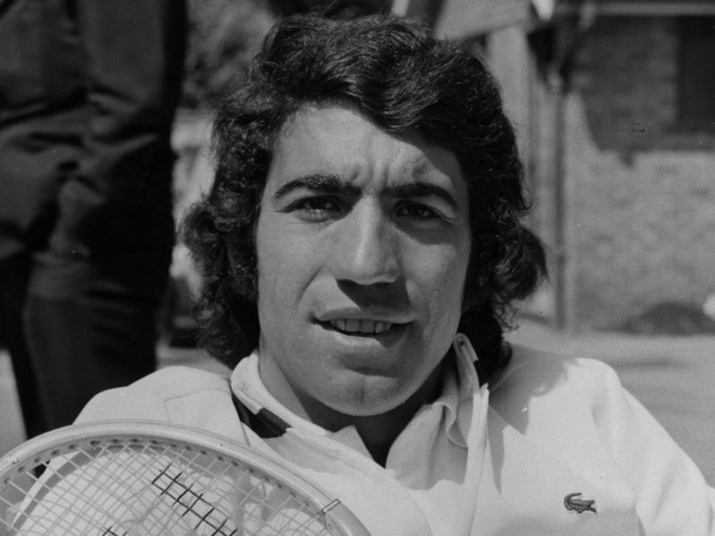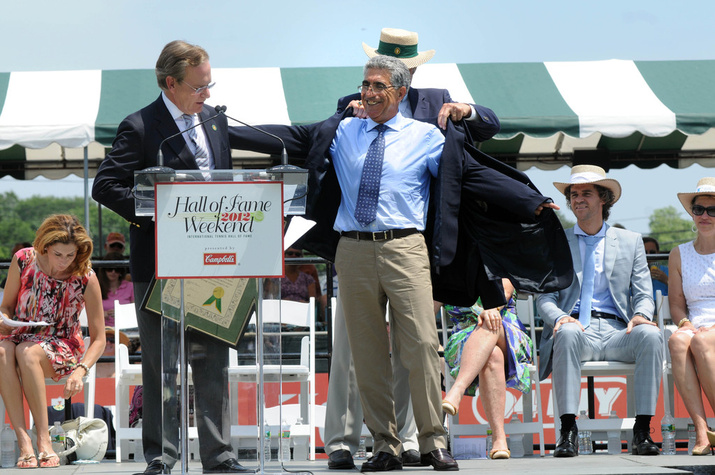Don't miss any stories → Follow Tennis View
FollowLook Back in History: Manuel Orantes at the 1975 US Open
In the 1970s, multiple Grand Slam champions Jimmy Connors, John McEnroe, John Newcombe, and Ken Rosewall did not surprise while earning titles at the U. S. Open. However, midway through that decade, a more uncommon name grabbed headlines. A 26-year-old from Spain by the name of Manuel Orantes would shock New York.
In 1975, it was a 21-year-old Jimmy Connors who had taken the tennis scene by storm with his fierce, brash, and intense competitive style. The St. Louis native had already pocketed three Grand Slam titles, including the 1974 U. S. Open at Forest Hills, and was anointed the next dominant player in the sport. The fiery Connors dominated the covers of magazines and other publications after becoming the new face of American tennis. With his romance involving women’s champion Chris Evert piquing attention, the pair had become media darlings, and as the U. S. Open rolled around that season, it was deemed Connors' title once more. However, Manuel Orantes did not receive that memo.

Orantes came into that season as an accomplished player in his own right, despite failing to grab headlines like Connors, Borg, and others during the decade of glitter. Much of that was due to Orantes himself, who was the antithesis of self-promotion. Known as one of the nicer and more modest players on tour, a negative word was seldom tossed in his direction. While bitter rivalries involving players such as Ilie Nastase and others surfaced, Orantes escaped by maintaining his unassuming, business-as-usual approach. That method of operation earned the Spaniard deep runs at the Australian Open in 1968, a semifinal run at Wimbledon in 1972, and a finals appearance at the French Open in 1974. He was also in the midst of a .722 win percentage in Grand Slams, while ultimately logging a lofty .769 win percentage on clay.
On the Har-Tru clay courts of Forest Hills that year, top-seeded Connors rolled through the draw, advancing to the final while dropping just one total set. In the semifinals, he dispatched the ultimate 11-time Grand Slam champion Bjorn Borg in straight sets, 7-5 7-5 7-5. With the final the following day, Connors' early and quick results in the semifinals found him rested and in prime position to capture his second U. S. Open title.
Meanwhile, Orantes was tested in the third and fourth rounds but advanced to set up a quarterfinal match with Nastase. The Spaniard was victorious in four sets, but it was a semifinal match with Guillermo Vilas where Orantes would earn a reputation as a comeback artist.
Orantes would drop the first two sets to Vilas before rebounding in the third. However, he would find himself in a 0-5 hole in the fourth set. The Argentine and eventual four-time Grand Slam Champion found two match points on his racket, but Orantes would quickly turn the set and match upside down rallying to take the next seven games and the set. In a prelude to what has become expected in night matches at the U. S. Open, a crazed crowd witnessed the two champions battle until late in the evening before Orantes advanced to the final, 4-6 1-6 6-2 7-5 6-4. It was known as one of the greatest comebacks in tennis at that time.
The following day, the stars had appeared to align for the American after Orantes' marathon match the night before. Few envisioned an outcome other than another Connors U. S. Open title. However, the Granada native dismantled Connors with slices and drop shots, setting up an assortment of passing shots while consistently outdueling him from the baseline. When the dust settled, Orantes had won his first Grand Slam, 6-4 6-3 6-3, astonishing tennis fans in New York and throughout the United States.
The 1975 U. S. Open title would be the only Grand Slam championship of Orantes' career. However, he would go on to capture 33 titles, including the 1976 year-end championships and all of the major clay court titles with the exception of Roland Garros. He defeated greats such as Borg, Connors, McEnroe, Vilas, Roche, and Rosewall along the way. Unlike today, where a number of Spaniards are at the top of the game, Orantes carried his country's torch for the majority of his career and was a fixture in Davis Cup.
Orantes was eventually inducted into the International Tennis Hall of Fame in 2012. However, he and others with a lone Grand Slam championship often stir debate over whether they deserve induction. Clearly, his body of work beyond the majors was significant, and he was found worthy of a seat at the table. In comparison, Michael Chang and Gabriela Sabatini both captured just one Grand Slam title, and their success somewhat resembled that of Orantes. Both were inducted into the Hall of Fame as well, keeping the consistency intact.

Meanwhile, how will current active players with just one Grand Slam title fare once their careers end? Juan Martin del Potro, Francesca Schiavone, Samantha Stosur, and Ana Ivanovic have all won just a single major championship. Will they finish their careers with enough success to warrant induction as well? Petra Kvitova recently separated herself from the “one-hit wonders” with her second Wimbledon title, surely allowing her entrance in the future. Still, debate will continue as to whether a higher standard should exist for entrance to the pinnacle of tennis accomplishments.
Certainly, competitors with just one Grand Slam title are held at a slightly lower regard than multiple champions. In the case of Orantes, competing in an era with the likes of Connors, Borg, Vilas, and other legends allowed him to hide in plain sight when discussion of the greats of his time period are concerned. However, that does not diminish his significant run at the U. S. Open in 1975. It was a run that very few expected, and it does not take away from a career filled with success.
One of the more compelling feats in tennis can be an unlikely result at a Grand Slam event. While the “Big Four” have dominated the U. S. Open over the majority of the last decade, there is evidence of unexpected runs sprinkled in. Will there be a Manuel Orantes at Flushing Meadows this year? There are certainly a number of competitors who feel capable.










